Your Coffee Stain Isn’t a Lost Cause: A Pro’s Guide to Saving Your Clothes
I’ve spent a long time in the world of textile care, and if there’s one stain that sends people into an absolute panic, it’s coffee. That dark splash on a crisp, clean shirt? It feels like a total disaster. But honestly, most coffee stains are completely fixable if you know how to handle them. It’s not about some magical, secret formula—it’s just about understanding the stain and using the right tools for the job.
In this article
- First, Why Are Coffee Stains So Stubborn?
- The First 60 Seconds: Damage Control at Home
- Coffee Stain SOS: What to Do When You’re Out and About
- Your Stain-Fighting Toolkit (And What It’ll Cost You)
- The Go-To Method for Fresh Stains
- Tackling Old, Set-in Stains (The Real Challenge)
- Special Cases: Your Couch and Delicate Sweaters
- Inspiration:
So, let’s walk through the exact process I’d use in my own shop. We’ll cover why coffee is such a pain, what to do in that first critical minute, and how to tackle stains both fresh and old. Think of it as learning a new skill. Once you get the principles down, you’ll be able to face any coffee spill with total confidence.
First, Why Are Coffee Stains So Stubborn?
Before you attack a stain, it helps to know your enemy. Coffee isn’t just brown-colored water; its color comes from plant compounds called tannins. These are the same things you find in red wine and tea, and they are basically a natural dye that loves to cling to natural fibers like cotton and linen.
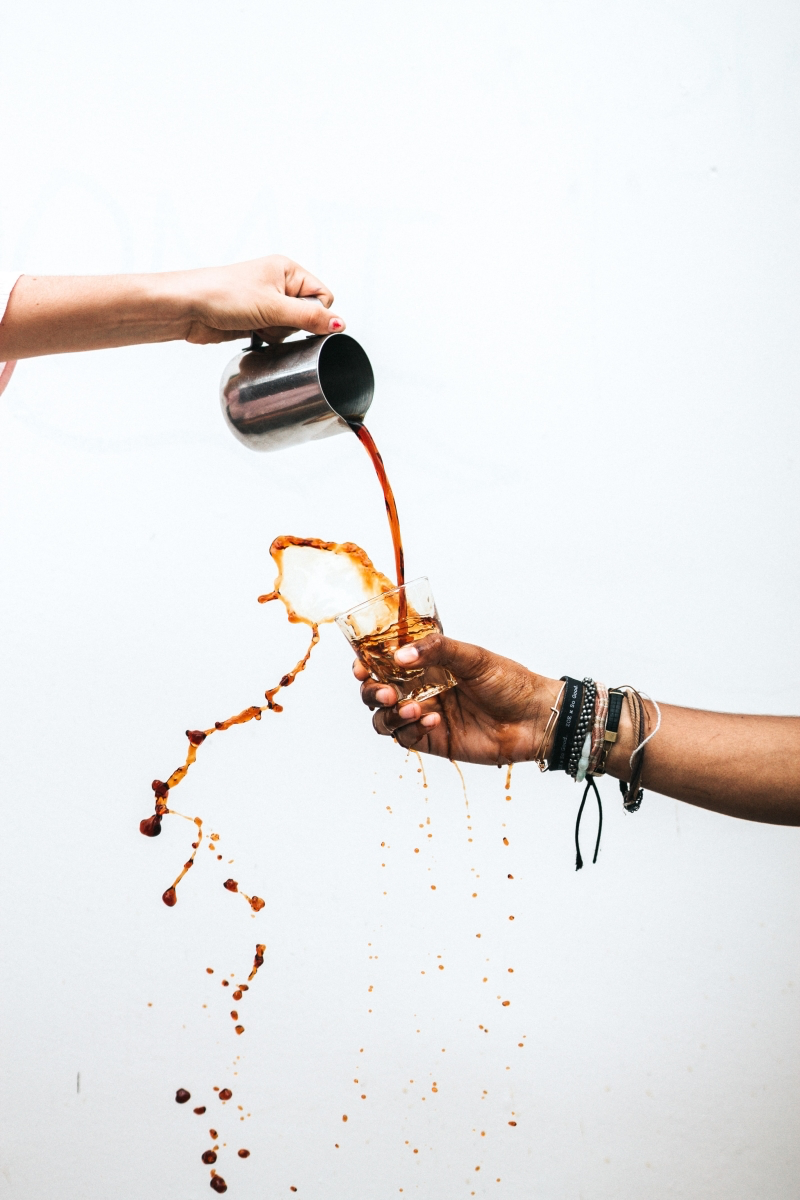
When you spill hot coffee, the heat makes the fabric fibers swell up and open, allowing those tannin molecules to burrow deep inside. As it cools, the fibers tighten back up, trapping the stain. It gets even more complicated if you take your coffee with extras:
- Sugar: This makes the stain sticky and can even caramelize with heat, creating a weird, brownish crust. A sugary spot also attracts dirt, making it look even worse over time.
- Milk or Cream: Now you’re dealing with a combo stain. Milk adds protein and fat to the mix, which requires a different approach. A quick tip: always treat the milky part first before going after the coffee tannin itself. For a spill with both, you’re essentially doing a two-step clean.
And of course, the fabric type matters a ton. Natural fibers like cotton are super absorbent and grab onto tannins for dear life. Synthetics like polyester, on the other hand, are basically plastic, so the stain tends to sit on the surface, making it way easier to clean.
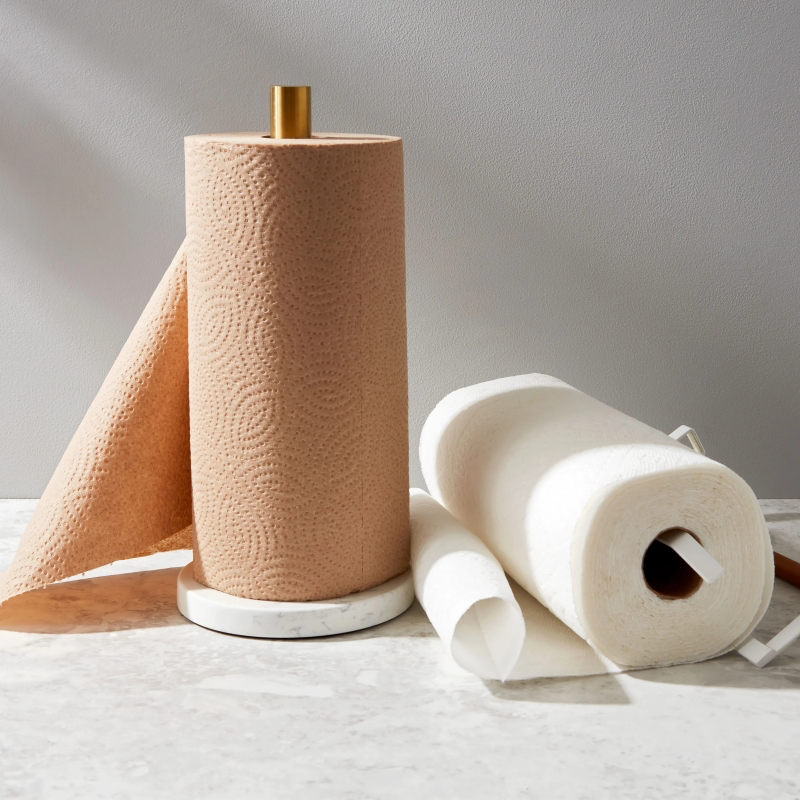
The First 60 Seconds: Damage Control at Home
What you do right after the spill makes all the difference. Panicking and scrubbing is the single worst thing you can do. It just grinds the stain deeper and can damage the fabric.
Instead, take a deep breath and do this:
1. Blot, Don’t Rub. Grab a clean, dry, absorbent cloth (an old white t-shirt is perfect) and press it firmly onto the stain. This wicks the liquid up and out. Lift the cloth, move to a clean spot, and blot again. Keep doing this until you’re not getting much coffee out anymore.
2. Flush with COOL Water. Get the item to a sink. Remember how heat sets the stain? Hot water will do the same thing. Always use cool water. Turn the garment inside out and hold the stained part under the faucet, letting the water run through from the back. This pushes the stain particles back out the way they came in.
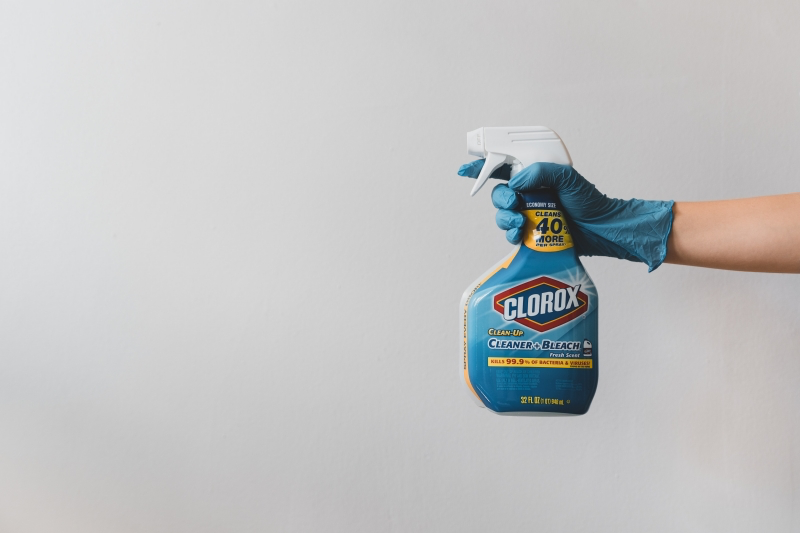
Heads up! Before you do anything else, check the care label. If it says “Dry Clean Only,” your job is done. Just blot and get it to a professional. It’s not worth risking water damage on delicate fabrics like silk or some rayons.
Coffee Stain SOS: What to Do When You’re Out and About
Let’s be real, most coffee spills happen at a cafe or the office, not conveniently next to your laundry room. Here’s your game plan for that.
Immediately grab a paper towel or napkin and blot. A crucial warning here: whatever you do, do not use a colored paper napkin on a light-colored shirt! I’ve seen people trade a brown coffee stain for a bright pink dye stain, and that’s a much harder problem to solve. Always use a white napkin if you can.
In a pinch? Ask the barista for a little club soda. The carbonation can help lift the stain particles from the fibers. Gently blot it on with a clean cloth—again, no rubbing. This little trick can keep the stain from setting until you can get home and treat it properly.
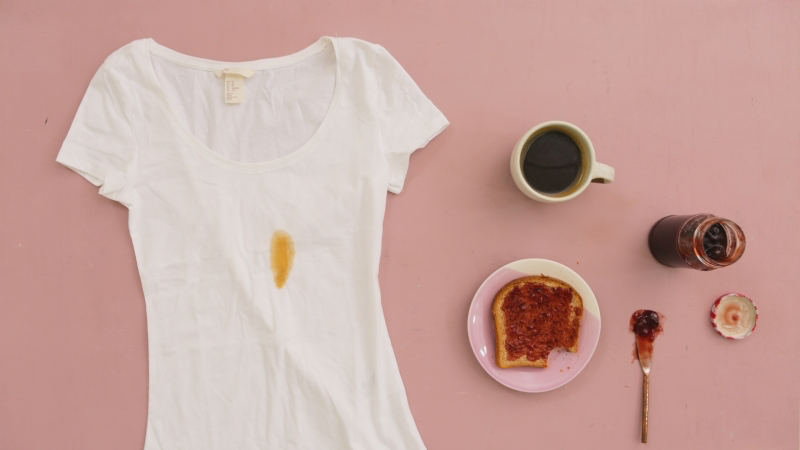
Your Stain-Fighting Toolkit (And What It’ll Cost You)
You don’t need a professional lab to fight stains. Your local supermarket or pharmacy has everything you need. Here’s a quick shopping list:
- A Good Liquid Laundry Detergent: Look for one with enzymes. From my experience, brands like Tide or Persil work exceptionally well because their enzymes are fantastic at breaking down the protein in milk stains. A bottle will run you about $12-$20.
- Oxygen Bleach: This is your secret weapon for old, set-in stains. It’s sold as a powder under brand names like OxiClean or as a generic sodium percarbonate. A big box costs around $8-$12 and will last you ages.
- Distilled White Vinegar: The mild acid is great for breaking down tannins. A huge jug is usually less than $5 at any grocery store.
- Glycerin: This is a lesser-known trick for old, hardened stains. It helps soften them up. You can find it at most pharmacies in the skincare aisle for about $5-$8 a bottle.
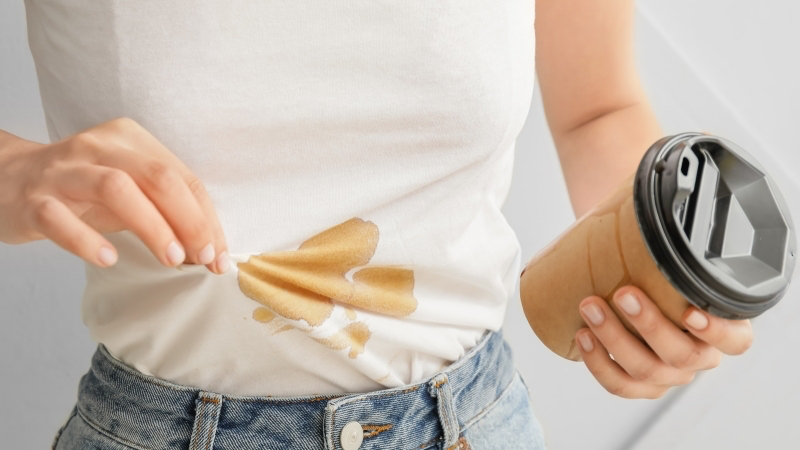
The Go-To Method for Fresh Stains
Okay, you’ve blotted and rinsed, and the garment is washable. Here’s the next step.
Lay a clean, white towel on your counter and place the stained area on top of it. Pour a small amount of your liquid detergent (like Tide) directly onto the stain. Let it sit for about five or ten minutes. Then, gently rub the fabric against itself or use an old, soft toothbrush to work the detergent in. Work from the outside of the stain toward the center to keep it from spreading.
Rinse it thoroughly with cool water from the back again. Now, hold the wet fabric up to a light. Is the stain completely gone? If you see even a faint shadow, repeat the process.
Here’s the golden rule of stain removal: NEVER put a stained garment in the dryer. The heat will cook that stain in permanently, and it becomes nearly impossible to remove. Always air dry the item first to be 100% sure the stain is gone. If you spot a faint mark after it’s dry, you can still treat it again.
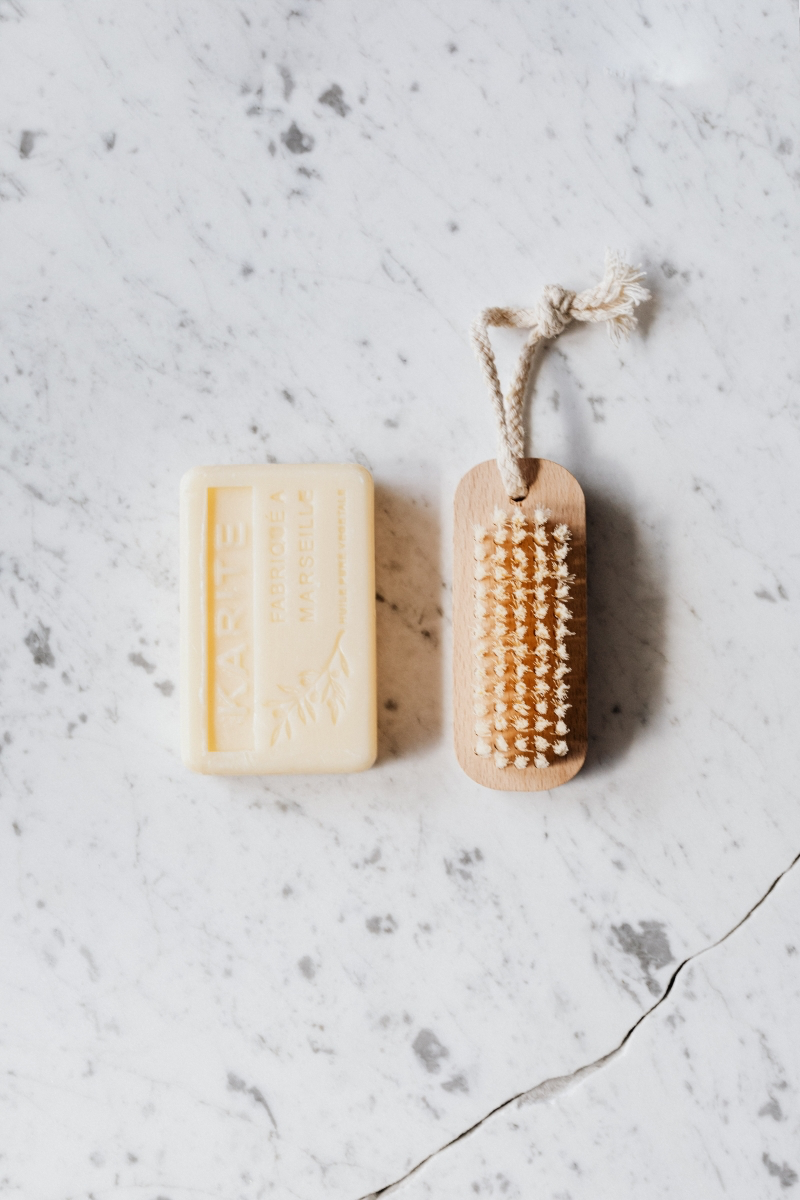
Tackling Old, Set-in Stains (The Real Challenge)
Found a coffee stain from last week? Or, the horror, one that’s been through the dryer? It’s tough, but not always a lost cause. You just need more power and more time.
For durable, light-colored fabrics (especially whites), an extended soak is your best bet. Fill a bucket with cool water, add a scoop of oxygen bleach (like OxiClean), and stir until it’s dissolved. Submerge the garment and let it soak for at least four hours, or even overnight. I’ve let things soak for a full 24 hours for really stubborn stains. After the soak, rinse and check. If it’s gone, wash as usual.
If the stain is still there or you’re working on a colored item you’re worried about fading, it’s time for a more targeted approach. A good starting point is a mix of one part white vinegar and one part cool water. Dab it on, let it sit for 10 minutes, and rinse. Always test any new solution on a hidden spot first, like an inside seam, to make sure it doesn’t mess with the color.
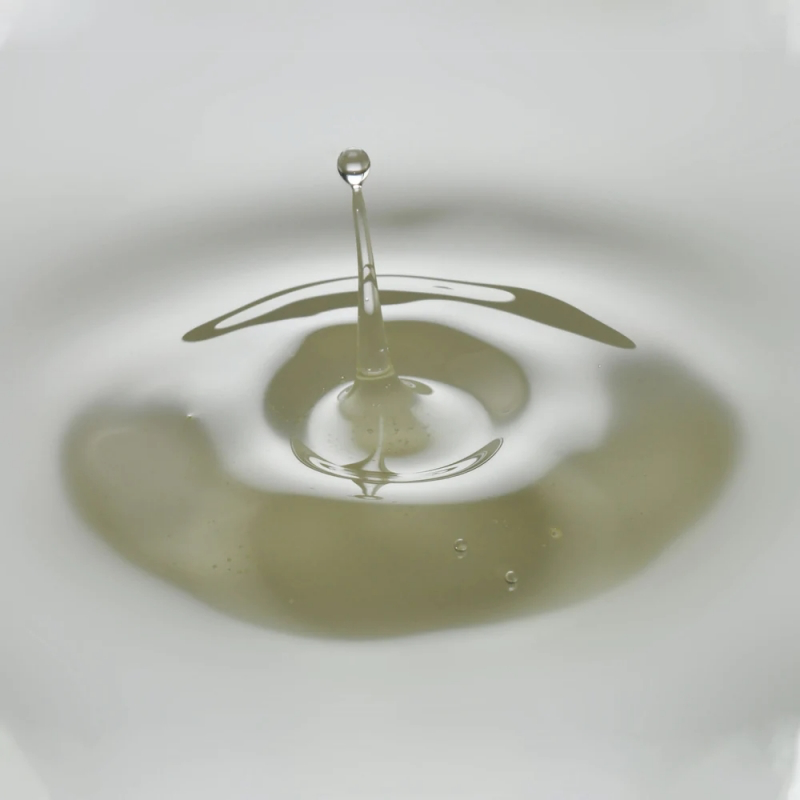
For really tough spots on white cotton, a few drops of 3% hydrogen peroxide can work wonders. But be careful, as it can act as a bleach. For an old, crusty stain, applying some warm glycerin and letting it sit for 30 minutes before treating with detergent can soften it right up.
Special Cases: Your Couch and Delicate Sweaters
Of course, not everything is a simple cotton tee. For wool and silk, you have to be extremely gentle. Harsh detergents can ruin them. Honestly, for an expensive wool sweater or silk blouse, my best advice is to take it to a professional dry cleaner. I once ruined a client’s cashmere scarf by being too aggressive at home—a hard lesson in knowing when to call in the pros.
And for upholstery or carpet, you can’t just rinse it in a sink. The key is to use as little moisture as possible.
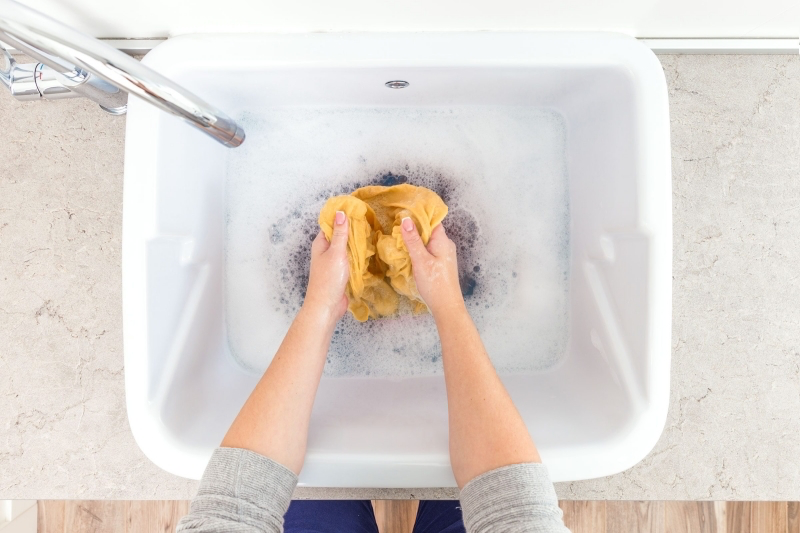
1. Blot up everything you can with dry cloths. Period.
2. Mix a simple solution: two cups of cool water, a tablespoon of white vinegar, and a teaspoon of clear, unscented dish soap. (Don’t use laundry detergent; it’s too sudsy and a pain to get out).
3. Dab this solution onto the stain with a clean cloth. Don’t saturate the area. Just moisten it.
4. Blot with a completely dry cloth to lift the solution and the stain out.
5. Repeat this dab-and-blot process until the stain is gone.
6. To finish, gently blot the area with a cloth dampened with just plain water. This ‘rinses’ out any soap residue. Then, let it air dry completely.
So, there you have it. The next time a coffee emergency strikes, you’ll be ready. In fact, here’s a little challenge: got a shirt in your closet that you gave up on? Try the overnight oxygen bleach soak this weekend. I love a good stain-removal success story!
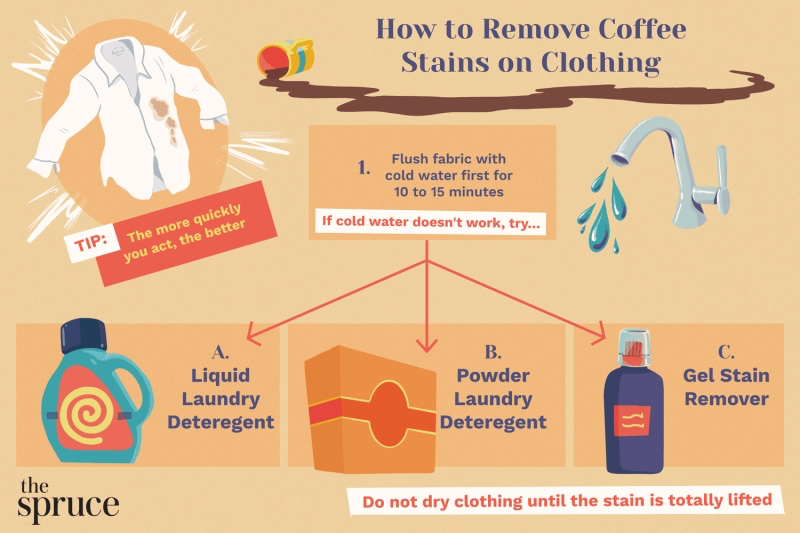
Inspiration:
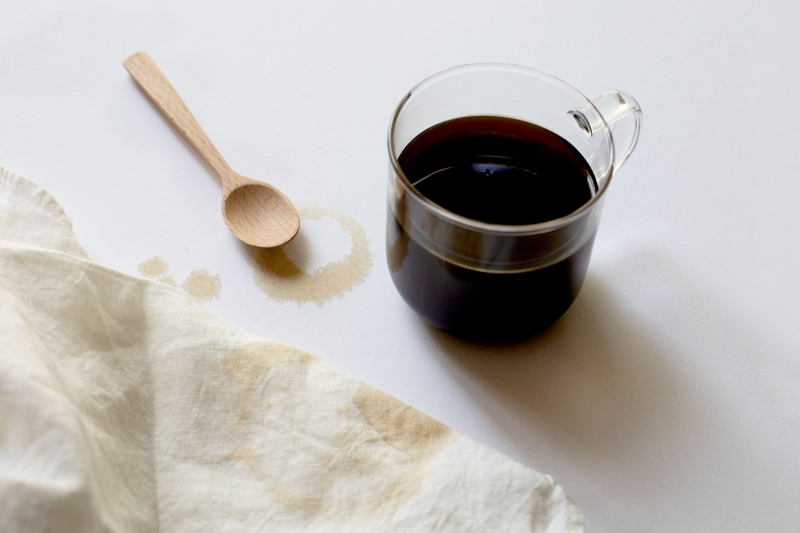
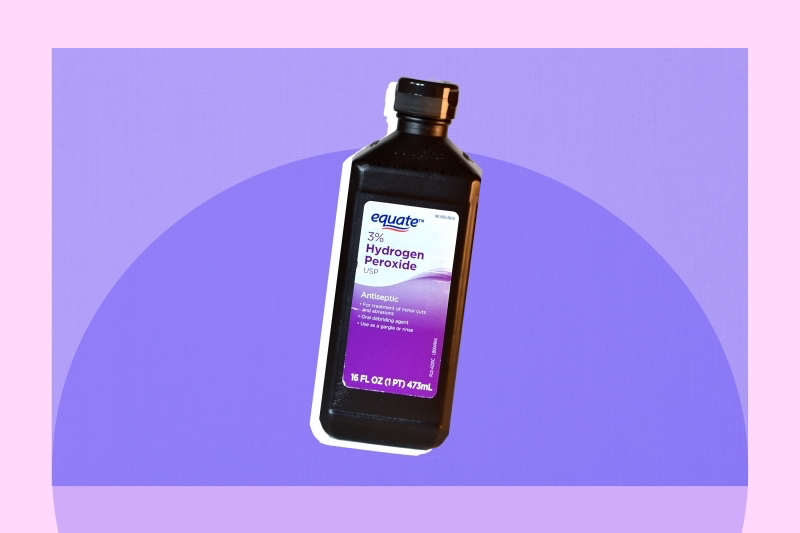
Enzyme vs. Oxidizing Cleaners: What’s the Difference?
Oxidizing Cleaner (like OxiClean): This type of cleaner uses active oxygen to chemically break down the color-causing tannins in black coffee. It’s highly effective on white and color-safe fabrics but can be harsh on delicates.
Enzyme Cleaner (like Puracy Natural Stain Remover): This formula uses enzymes to digest proteins and fats. It’s the non-negotiable first step for latte or cappuccino stains, as it specifically targets the milk component that an oxidizer might miss. For a milky coffee spill, always use an enzyme cleaner first.
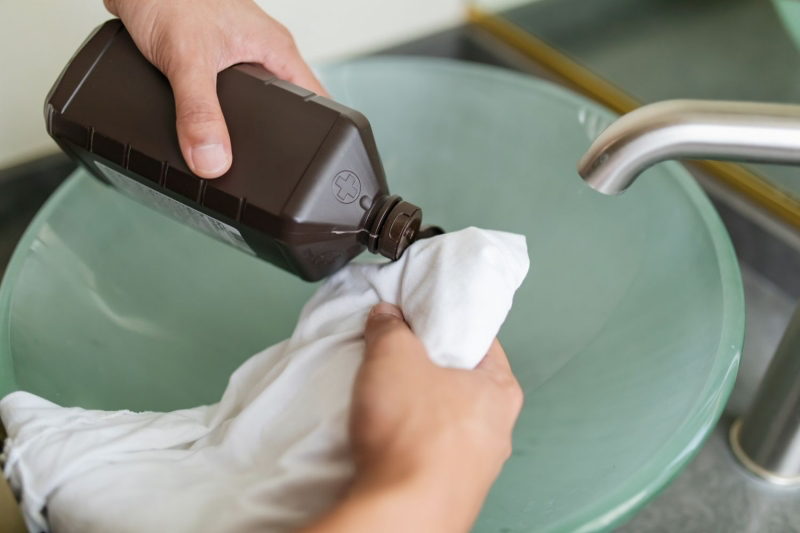
An estimated 90 million garments end up in landfills prematurely each year due to stubborn stains or color fading. Knowing how to properly treat a common spill like coffee can significantly extend the life of your wardrobe.
This isn’t just about saving a favorite shirt; it’s a small but impactful sustainable practice. By mastering this skill, you’re actively participating in reducing textile waste, one successful stain removal at a time.

What about a dried, set-in coffee stain on a delicate fabric like wool or silk?
Patience is your best tool here. For these natural protein fibers, avoid harsh chemicals. Mix a solution of one part white vinegar to two parts cool water. Gently blot the stain with a clean, white cloth dipped in the solution—never scrub. The mild acid in the vinegar helps to break down the tannins without damaging the delicate fibers. Let it sit for 10-15 minutes before rinsing with cold water.
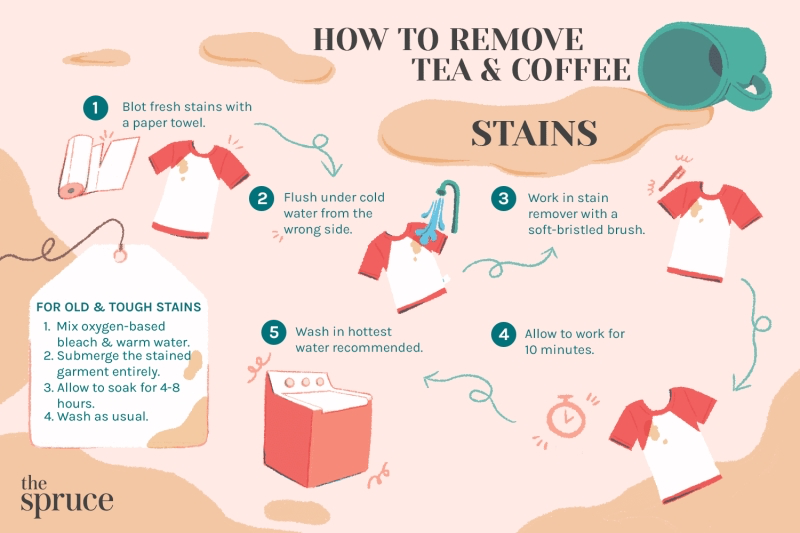
Critical Mistake: Using heat to dry a lingering stain. The worst thing you can do is toss a coffee-stained garment into a hot dryer, even if the stain looks faint. The high heat will permanently set the tannins into the fabric fibers, almost like a dye. Always air-dry the item after treatment to ensure the stain is completely gone before applying any heat.

- It can help prevent a stain from setting on the go.
- It works without water or soap.
- It’s a lifesaver for business trips or dinners out.
The secret? A stain pen. Having a Tide to Go or a similar instant stain remover pen in your bag or car is the ultimate form of damage control. It allows you to immediately treat the spill, breaking down the coffee before it has a chance to fully bond with the fabric.
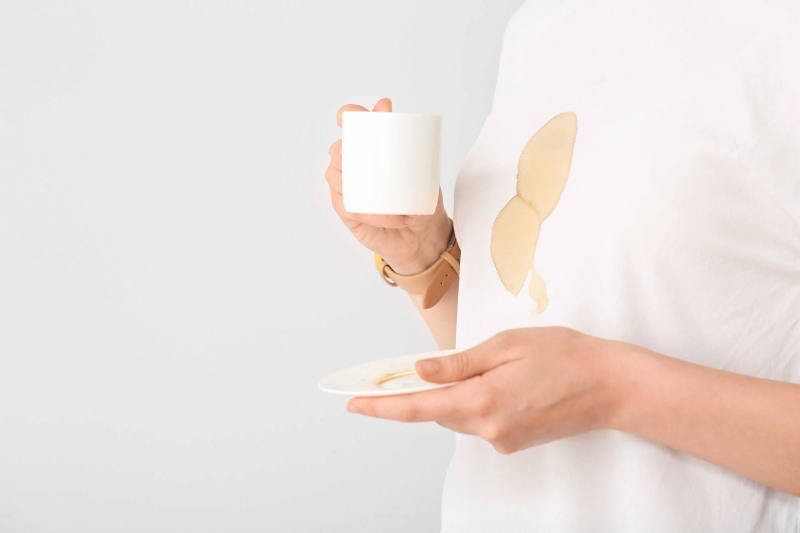
Beyond the technical steps, there’s a certain magic in the rescue. It’s the moment of truth when you pull a garment from the wash, holding it up to the light to find… nothing. The space where a dark, panic-inducing splash once was is now just clean, fresh-smelling fabric. It’s a small victory that restores not just your clothing, but also a sense of calm and control.
For coffee stains on sturdy white cottons, like a classic t-shirt or kitchen towel, sometimes the old ways are the best. A gentle bleach solution or a long soak in a product like Carbona Stain Devils for Coffee & Tea can work wonders where other methods fail.










